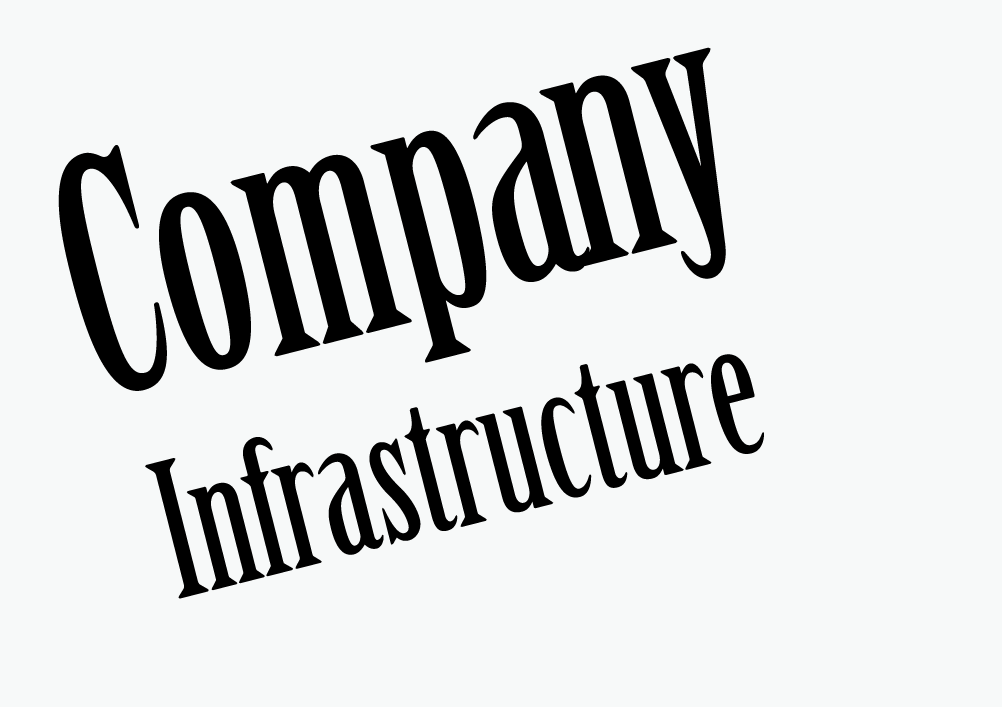Definition
Company infrastructure refers to the structure of services, facilities, and procedures/policies used by a business. In fact, the foundation of business is based on these blocks/structures. A good company infrastructure helps to execute operations.
Detailed explanation for company infrastructure
The infrastructure of a company is exactly like a country’s infrastructure, is what the company requires to function properly. It is a term for all the facilities and resources that a company sets up for the smooth and uninterrupted flow of its operations, processes, systems, and procedures. Not only does it include tangible resources like office space, furniture, computer systems, human resource, and technological resources, but it also consists of intangible resources like agreements and standards, rules and regulations, computer software, communication and management systems, etc.
The infrastructure of a country is a symbol of its progression and development. That’s why well-developed roads, health and education systems, telecommunication systems, waste management systems, and a sufficient utility supply indicate a healthy economy and prosperous state. If such facilities are provided in the country, the public shows greater satisfaction and loyalty towards the state.
Similar is the case with company infrastructure. A good office space, sufficient office supplies, a sound environment, supportive staff and management, well-defined work procedures, and availability of the latest technology will certainly increase an employee’s motivation to come to work every day. Greater work engagement and job satisfaction would become the sources of increased productivity, ultimately benefiting the achievement of the company’s objectives. This explains the necessity of having a solid company infrastructure.
A good company would have a continuously evolving infrastructure such that it aligns with the rapidly changing work dynamics and market demands. For instance, the increasing trend towards remote working has reduced the need for physical facilities at the workplace; rather, it has built a greater need for high-speed internet, IT skilled staff, interconnected servers, software, and platforms to promote work from home.
Components of Company Infrastructure
Infrastructure can be divided into three components which are explained with an example of a real estate Company below:
- Business Design
- Business Operations
- Human Resource
Business Design
A business design is the framework of work procedures and processes followed to achieve business objectives. For example, in a real estate company, the management has formulated a procedure for new bookings which has to be followed by all staff. This component of infrastructure gives a company its direction. It includes management systems like customer relationship management, project management, database management, continuous quality management, etc.
Business Operations
Operations are the component of infrastructure that ensures that all routine activities of the business keep going without any hindrance. For example, the operations department of a real estate company has to make sure that all steps from the booking of a unit to its payment take place systematically.
Coordination between departments and provision of administrative assistance are key responsibilities. The infrastructure required here includes a proper booking office space with furniture and stationery, necessary documents like booking forms and payment receipts, and technological resources.
IT infrastructure is included in operations, and it consists of computer hardware, software, networks, database, servers, storage, and internet access. For manufacturing sector organizations, vehicles, fuel, warehouses, inventory, production facilities, machinery, etc., make up the transportation and supply chain infrastructure which are elements of operations.
Human Resource
Designing business procedures requires a skilled and knowledgeable workforce. Employees are involved in all business tasks like dealing with clients, operating computer systems, closing deals, providing administrative support, etc. Similarly, managers from human resource are involved in policy and strategy formulation, supervision and monitoring, etc. Hence, a strong company infrastructure would include qualified staff that is satisfied, motivated, engaged, and loyal to their work.
As Gordon B. Hinckley says, “You can’t build a strong building on a weak foundation,” just like that you can’t build a strong company on a weak infrastructure.
